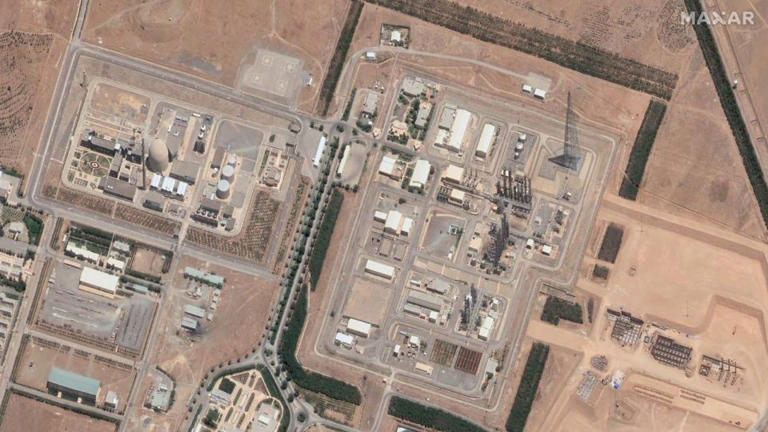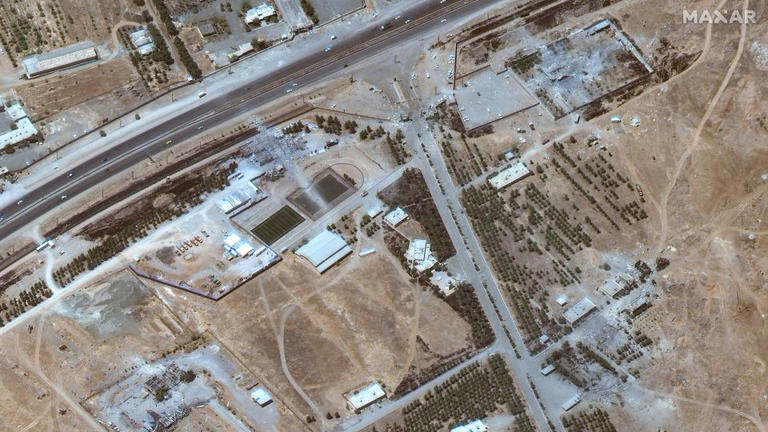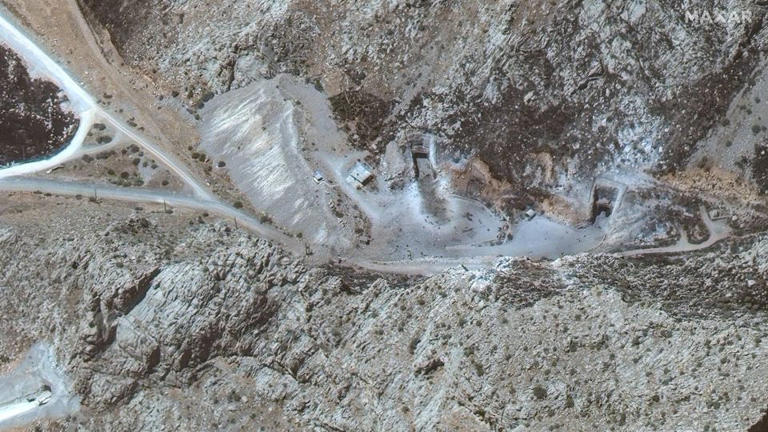Continues:
Isfahan
The extent of damage at the Isfahan nuclear site in central Iran was more difficult to parse in the hours after it was struck, with conflicting claims over the attack’s impact emerging in Israel and Iran.
However, the IAEA said later Saturday that four critical buildings at the site were damaged.
That assessment seemed to contradict earlier claims from Behrouz Kamalvandi, the spokesperson for the Atomic Energy Organization of Iran, who said Saturday that damage at the site - Iran’s largest nuclear research complex - was limited. A shed at the facility caught fire, he said.
Israel was more bullish; an IDF official said during a Saturday briefing that the site took significant damage.
Satellite imagery of the site on Saturday showed clear damage to three structures in the sprawling complex. The fourth cited by the IAEA was not immediately visible in the imagery.
But it is less obvious what material impact the damage had. Kamalvandi said equipment at two facilities - Natanz and Isfahan - had been moved in anticipation of the strikes, a claim that CNN cannot independently verify.
The facility was built with support from China and opened in 1984, the NTI says. According to the non-profit, 3,000 scientists are employed at Isfahan, and the site is “suspected of being the center” of Iran’s nuclear program.
It “operates three small Chinese-supplied research reactors,” as well as a “conversion facility, a fuel production plant, a zirconium cladding plant, and other facilities and laboratories,” the NTI says.
At a Saturday briefing, an IDF official said Israel had “concrete intelligence” that Iran was “moving forward to a nuclear bomb” at the Isfahan facility. Despite advancing its uranium enrichment significantly, Iran has repeatedly said that its nuclear program is for peaceful purposes and denied that it was developing an atomic bomb.
Fordow
The Fordow Fuel Enrichment Plant is a far more difficult site to target. The plant is buried deep in the mountains near Qom, in northern Iran, and houses advanced centrifuges used to enrich uranium up to high grades of purity.
Israel targeted the site during its Friday attacks, but the IAEA said it was not impacted and the IDF has not claimed any significant damage there. Iranian air defenses shot down an Israeli drone in the vicinity of the plant, Iranian state media outlet Press TV reported Friday evening.
“The expectation has always been that Israel would not be able to reach (Fordow), because it would need the kind of bunker-buster, massive ordinance bombs that only the United States has,” Vaez said.
Satellite imagery appears to support that assessment. Little damage appears visible in the below image, taken by Maxar on Saturday.
Fordow’s fate could be pivotal to the overall success of Israel’s attacks.
In 2023, the Vienna-based International Atomic Energy Agency confirmed that uranium particles enriched to 83.7% purity - which is close to the 90% enrichment levels needed to make a nuclear bomb - had been found in Fordow.
“If Fordow remains operational, Israel’s attacks may barely slow Iran’s path to the bomb,” James M. Acton, co-director of the Nuclear Policy Program at the Carnegie Endowment for International Peace, wrote on Friday.
Acton said Israel might be able to collapse the entrance to the facility, but noted that destroying much more of the Fordow site would be a difficult task for Israel.
Other targets
The Arak nuclear facility in central Iran appeared to ride out the first wave of Israeli strikes unscathed. That site houses a heavy water nuclear reactor which has concerned the West, because heavy water (or deuterium oxide) can be used to produce plutonium - a second pathway to a potential nuclear bomb.

A satellite image taken on 14 June shows no visible damage to Iran's Arak Nuclear Complex. - Maxar Technologies
Attacking nuclear infrastructure was Israel’s main objective, but its strikes also targeted a number of other sites associated with Iran’s military and its secretive Islamic Revolutionary Guard Corps (IRGC).
A missile facility in Kermanshah, western Iran, took on heavy damage, according to imagery from Maxar.

A satellite image shows significant damage to buildings at Iran's Kermanshah Missile Facility after repeated Israeli strikes on the site. Satellite image ©2025 Maxar Technologies. - Maxar Technologies

Piranshahr, near the Iraqi border in western Iran, overhead imagery shows a small military building largely flattened by strikes. The earlier image from Maxar Technologies was taken last month, and vehicles are visible for scale.
And in western Tehran, a large building at an IRGC facility appears significantly damaged, with much of its roof blown off.
The chief of the IRGC, Maj. Gen. Hossein Salami, was one of the key military figures killed in Israel’s strikes on Friday.



